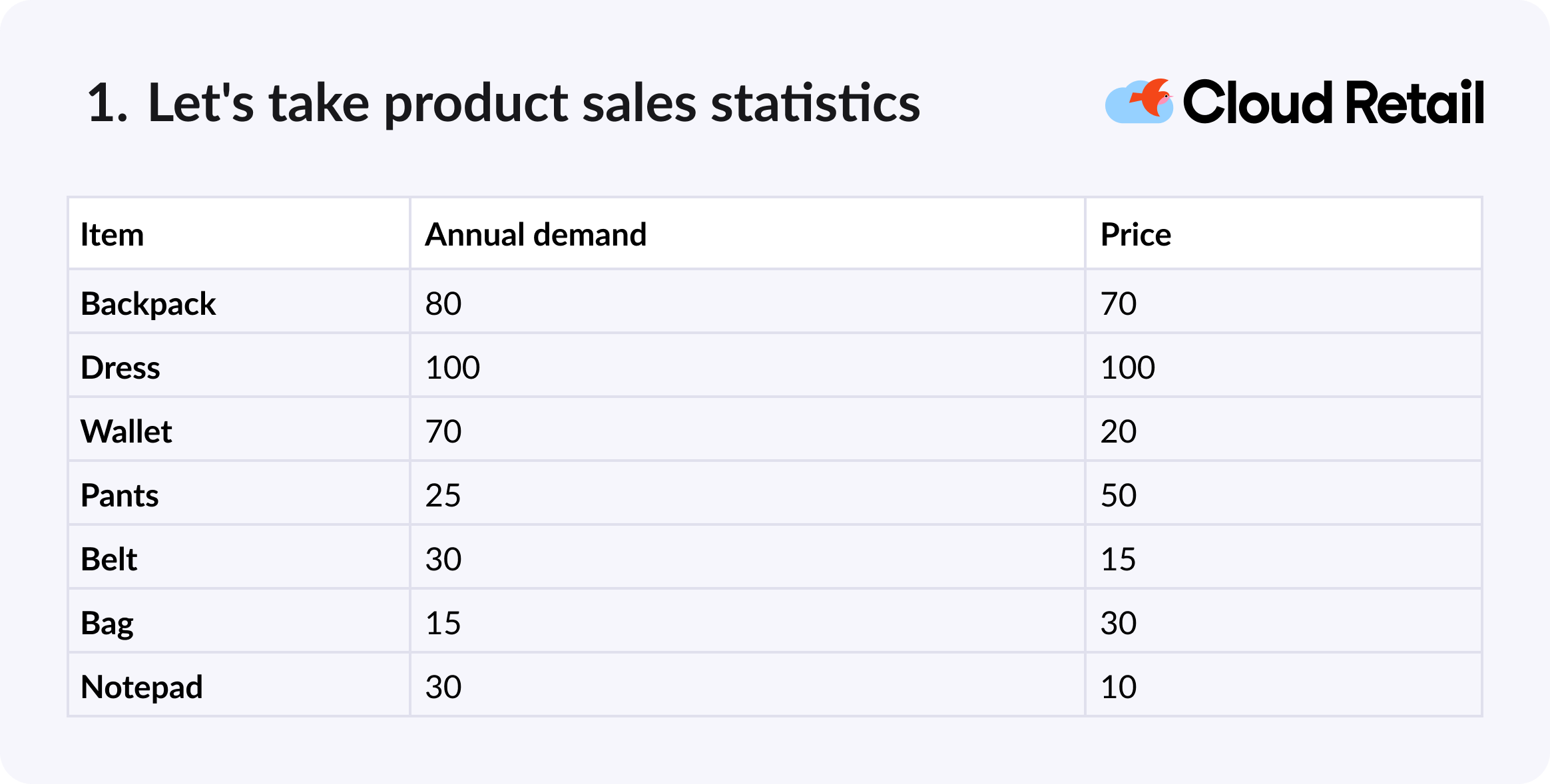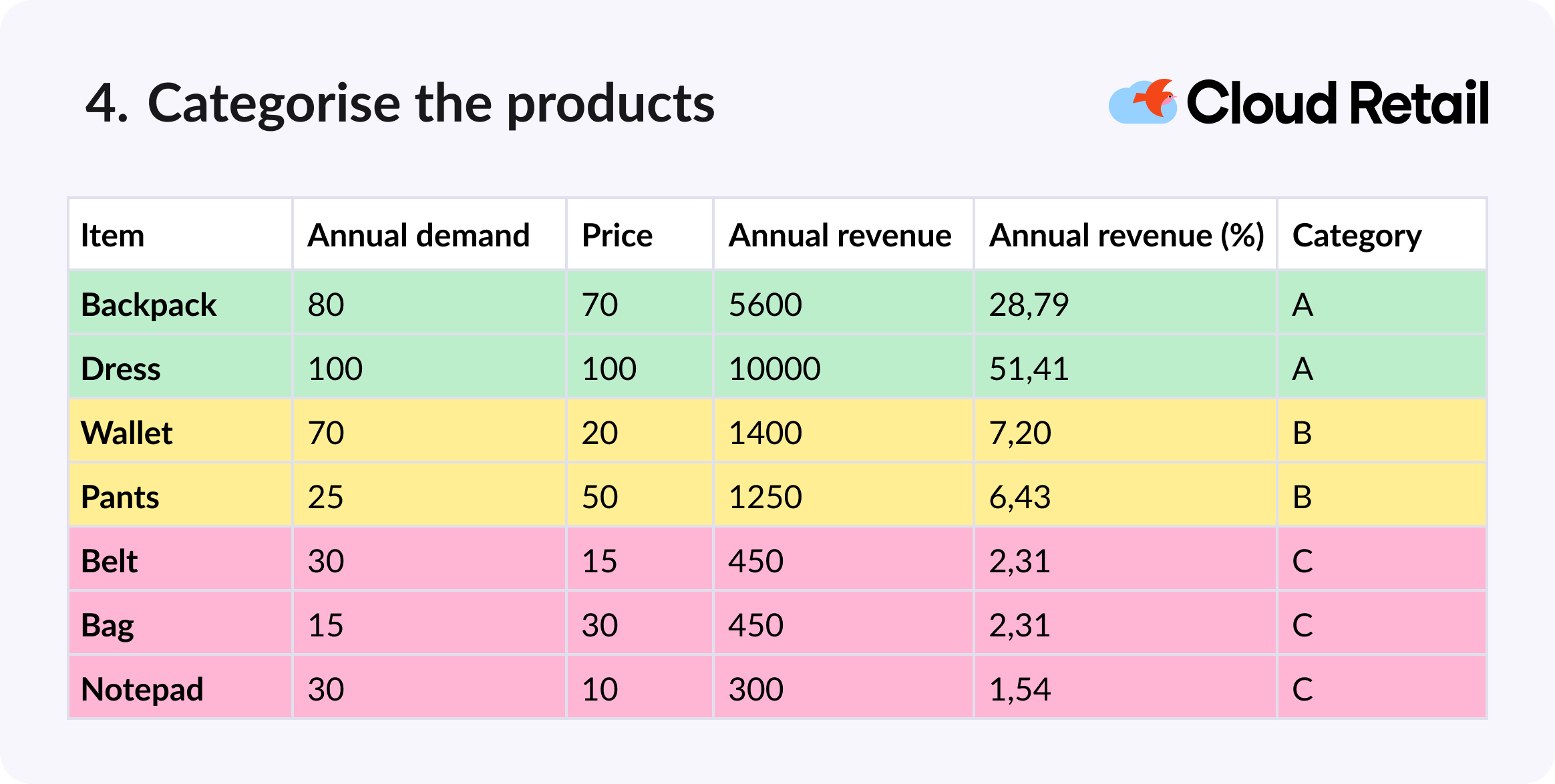Reading time: 7 min
ABC analysis helps to understand what brings the most money to a business. It's based on Pareto's principle: 20% of effort produces 80% of results. To achieve the remaining 20% of results, 80% of effort is required. Specifically, in ABC analysis, three categories are highlighted, unsurprisingly A, B, and C.
ABC Analysis Can Help to Define:
products that generate the most profit. This allows you to focus on promoting these products and optimising purchases.
the correct amount of warehouse stock. This helps avoid excessive stock of slow-moving products and reduces storage costs.
the most valuable customers. Understanding which of your customers bring the most profit allows you to pay more attention to them and offer individual cooperation terms.
the most reliable suppliers. This helps optimise the supply chain and reduce risks associated with delays or low-quality products.
the effectiveness of marketing campaigns. ABC analysis can help identify which advertising campaigns bring the highest ROI, allowing you to optimise the budget and intensify efforts in the most promising directions.
How ABC Analysis Works Using Inventory Management as an Example
As at Jiffy we create products for online sales automation, let's take the classic task of analysing a seller's assortment as an example.




A: Ensure strict control, regular checks, and accurate forecasting. Consider implementing a "just-in-time" (JIT) order system for these products.
B: Exercise reasonable control and reassess it when necessary.
C: Implement weaker control, consider bulk orders, and check C-items less frequently. Some of them can simply be phased out.
How ABC Analysis Aids in Decision Making
Let's consider the same example, with inventory analysis:
A: Ensure strict control, regular checks, and accurate forecasting. For these products, consider implementing a "Just-In-Time" (JIT) ordering system.
B: Exercise reasonable control and reassess when necessary.
C: Exercise weaker control, consider the possibility of bulk orders, and check C-items less frequently. Some of them can simply be phased out.
Analysis and Adjustment: Regularly review the ABC classification to ensure that products are assigned to appropriate categories, especially in the event of changes in demand or price.
Optimising Product Placement in the Warehouse: This is an important and not-so-obvious aspect. If products are arranged according to their demand (not in terms of revenue, but in units), you can optimise the "run" of the order picker.
If the impact on revenue is more obvious, the warehouse layout deserves additional commentary. One might think – if a person assembles orders a bit faster, so what?
In the case when we had our own stores, we compared our warehouses with those of competitors. It turned out that for the same volume of orders and product items, we had 4 employees, while the competitors had 14. Of course, this was facilitated not only by the optimal product placement but also by other know-how, but it's essential not to underestimate the effect of this particular factor.
Complicating the Methodology - ABCD Analysis
We’'ve already mentioned that ABC analysis can be applied in various business areas, and even such a simple model can have a positive effect on business.
But when you've already applied the simplest solutions, sometimes it makes sense to modify the technology to get more out of it. Let's break it down with a specific example:
The problem with the classic ABC analysis is that it doesn't take into account the factor of product views. It might happen that a product was somewhere in a long tail of search results or at the very bottom of a catalogue, and it wasn't purchased simply because it wasn't seen.
That's why at Jiffy, we decided not to limit ourselves to simple ABC analysis and additionally introduced category D - products that haven't yet accumulated enough views to make conclusions about them.
All our new products always fell into category D and had to accumulate a certain number of views to be assigned to one of the three categories.
Conclusion
ABC analysis is a very powerful basic tool for analysing various business entities. Using this approach, you can easily dissect the key elements of the business - its target audience analysis, inventory, or marketing campaigns.
